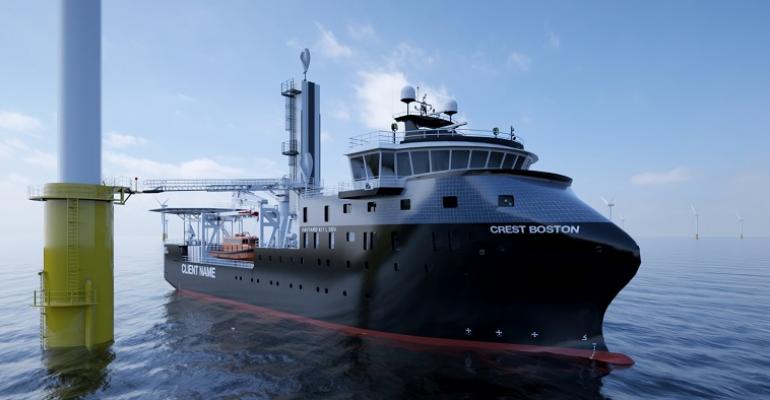As part of President Biden’s stated goal of having 30 GW of offshore wind energy in place by 2030, the US Bureau of Ocean Energy Management (BOEM) will hold up to seven lease sales by 2025.
So far, the country has just one offshore 30MW wind farm in operation off Rhode Island and a pilot project off the coast of Virginia. Now, the BOEM is preparing to hold lease auctions covering acreage in Gulf of Maine, Gulf of Mexico, California, North and South Carolina, Oregon, and New York Bight.
The relatively shallow water of the north-east coastal region is suitable for fixed bottom installations. But the seabed off the US west coast falls off sharply and floating technology is likely to be necessary there. Pioneered so far mostly by Norwegian state energy firm, Equinor, floating wind facilities are themselves at an early stage of development.
Following Haaland’s announcement at the Boston event, offshore wind experts gave their views on the feasibility of the sector development plans during an offshore wind conference, organised by Thomson Reuters Corporation. They welcomed the scale of the Biden Administration’s ambitions but highlighted several major challenges for the coming years.
These included the fact that the country has no supporting infrastructure, either in terms of installation vessels, service ships, or wind-focused port facilities on either coast. Most components are currently sourced in Europe. There are few, if any, fabrication facilities with the necessary know-how. And, in terms of supply chain and procurement, the experts pointed out the wind energy costs remain high without scale.
Meanwhile, others have pointed out that the Jones Act may itself prove to be a constraint. Requiring support ships of all types to be built in US yards, manned by US nationals, and flying the country’s flag, a whole new fleet of service vessels will be needed. No Jones Act-compliant wind turbine installation vessels currently exist although one is now under construction in Keppel AmFELS, Texas, for Dominion Energy.
Copyright © 2024. All rights reserved. Seatrade, a trading name of Informa Markets (UK) Limited.
Add Seatrade Maritime News to your Google News feed.  |

